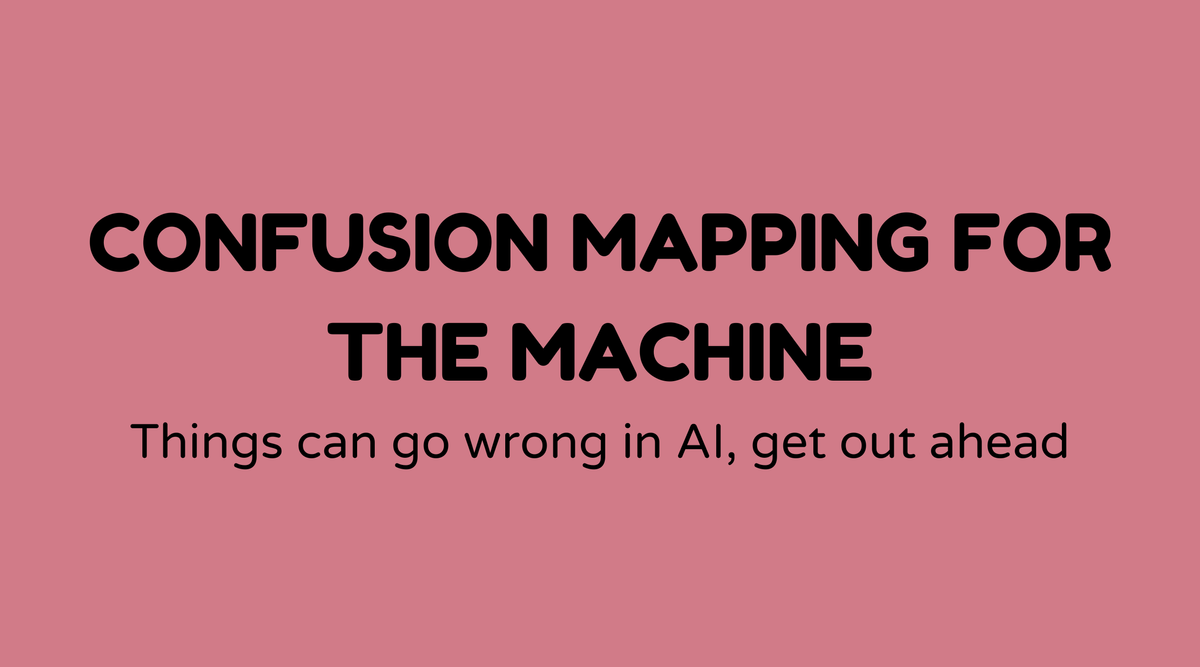Confusion Mapping for the Machine

Overview of Confusion Mapping for the Machine Workshop:
Confusion Mapping for the Machine Workshop is a valuable opportunity for many teams. It involves an examination of the areas causing mistakes in your machine learning projects. Whether you’re beginning your journey in ML or have some experience, grasping confusion mapping can clarify your machine's performance and guide you toward enhancement.
Machine learning projects can face obstacles. Confusion mapping plays a key role in diagnosing issues. That’s why workshops focused on this subject are so important. A Confusion Mapping Workshop equips participants with the knowledge and tools necessary to address and resolve these computational challenges efficiently.
Why Confusion Mapping for the Machine Matters:
It’s clear that a machine is only as effective as the instructions it receives. Confusion mapping is essential because it assists in interpreting where your machine learning model performs correctly and where it falls short. By pinpointing these confusion points, stakeholders can implement data-informed adjustments to improve model accuracy and reliability. You may avert a serious setback just by understanding what a confusion matrix reveals.
Machine learning technology is advancing swiftly, and businesses benefit from using these tools for maximizing efficiency and identifying solutions before issues escalate. Understanding the components of confusion mapping ensures that your machine learning applications are functioning at high capacity, which can have a marked effect on productivity and decision-making processes.
What is Confusion Mapping for the Machine:
In simple terms, confusion mapping involves utilizing confusion matrices to assess model performance. A confusion matrix is a table that outlines the performance of a classification model on a set of test data with known true values. This mapping helps to highlight specific areas where models make mistakes, allowing for clear diagnostics.
- True Positives (TP): Correctly predicted positive observations.
- True Negatives (TN): Correctly predicted negative observations.
- False Positives (Type I Error): Incorrectly predicted positive observations.
- False Negatives (Type II Error): Incorrectly predicted negative observations.
Once you have this information, you can discern not only how often your model is correct but, importantly, where it is incorrect.
How do you do Confusion Mapping for the Machine:
The process begins with constructing a confusion matrix based on the predicted and actual outcomes of your model. Here’s a straightforward guide:
- Collect Data: Assemble a comprehensive dataset that includes both predicted and actual outcomes.
- Run Your Model: Deploy your machine learning model on this data.
- Build the Confusion Matrix: Compare predicted outputs against actual results to populate the matrix.
- Analyze Results: Identify areas of confusion or recurring error patterns.
- Adjust and Optimize: Revise your algorithms or methods based on findings to lower error rates.
Sample Agenda of Confusion Mapping for the Machine Workshop:
Day 1: Introduction to Concepts
- Icebreaker Session
- Introduction to Machine Learning and Confusion Matrices
- Hands-on Session: Building Your First Confusion Matrix
Day 2: Deep Dive into Data
- Morning: Comprehensive Analysis of Confusion Matrices
- Afternoon: Use Case Discussions and Group Activities
Day 3: Application and Optimization
- Morning: Optimizing Models Using Confusion Mapping
- Afternoon: Review and Best Practices
- Wrap-up and Q&A
Examples of Confusion Mapping for the Machine:
A classic instance is in predictive analytics for healthcare systems. Suppose a hospital uses machine learning to forecast patient admissions. Confusion mapping helps identify when the system inaccurately predicts an admission, enabling staff to adjust their model and enhance patient service.
In another scenario, consider an online retail company utilizing an ML model for customer behavior predictions. Confusion mapping would determine where the model fails to recognize a likely purchase situation, assisting in strategizing sales tactics more effectively.
FAQs
What is a confusion matrix in machine learning?
A confusion matrix is a table used to assess the performance of a classification model. It outlines true positives, true negatives, false positives, and false negatives to provide insights into where a model’s predictions deviate from actual results.
Why is confusion mapping important?
Confusion mapping is critical for identifying problems within a machine learning model. It aids in fine-tuning the model, reducing errors and enhancing the precision of predictions.
How can confusion mapping be leveraged in business operations?
By identifying and rectifying prediction errors, businesses can refine their systems, making operations more accurate and reliable.
What's the difference between a true positive and a true negative?
A true positive is when the model correctly predicts a positive outcome. A true negative, in contrast, occurs when the model accurately predicts a negative outcome.
How often should confusion mapping be conducted?
This process should be a routine part of your model evaluation, especially when introducing new datasets or implementing significant changes to your model.
Can confusion mapping be automated?
Yes, various aspects of confusion mapping can be automated using specific ML tools and libraries that include built-in features for generating and analyzing confusion matrices.



